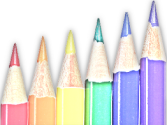Figurative Language
Overview
Many students have a mental block when it comes to poetry. By analyzing words, phrases and levels of meaning, the students will put the poetic interpretations back together to understand the poem. Starting with cliches, students learn what various phrases mean. This takes them from the literal meaning to a higher level of understanding.
Concepts
- Students will learn to identify and explain each use of figurative language including: simile, metaphor, personification, and hyperbole.
- Students will create a slide show, using a selected poem. Each frame will explain a different concept of figurative language.
Indicators
- Students research the meaning of three to five cliches of their choice.
- Students illustrate one cliche to add to the class book of illustrated cliches.
- Students summarize the cliche’s history and meaning and add this summary to their illustrations.
- Students learn to identify and classify the cliches into the types of figurative language.
- Students explain the meaning of a poem by first analyzing and defining the words and phrases.
- Students create a slide show in ClarisWorks, detailing their poetry analyses to be presented to the class.
Precomputer
On the computer
- In ClarisWorks, students will compose their slide shows. This will be done during the assigned computer lab days. Each student in the group will have equal responsibility for the final product.
- Each group will generate five questions related to the poem analyzed.
Postcomputer
- Students will present their slide shows to the class using Simulscan from the computer.
- Students will be tested on the student-generated questions.
Related resources
- Dictionary of Cliches (class set)

